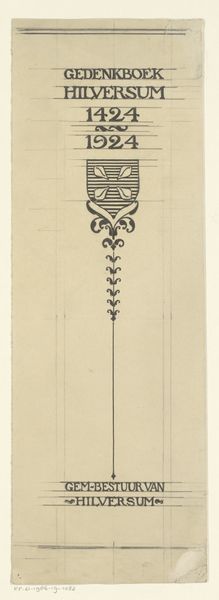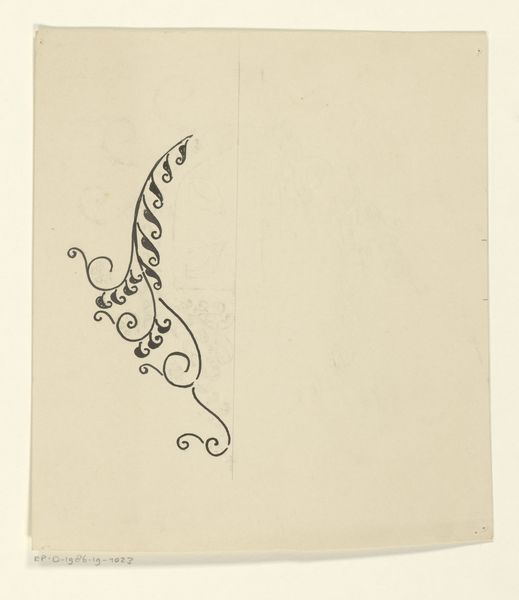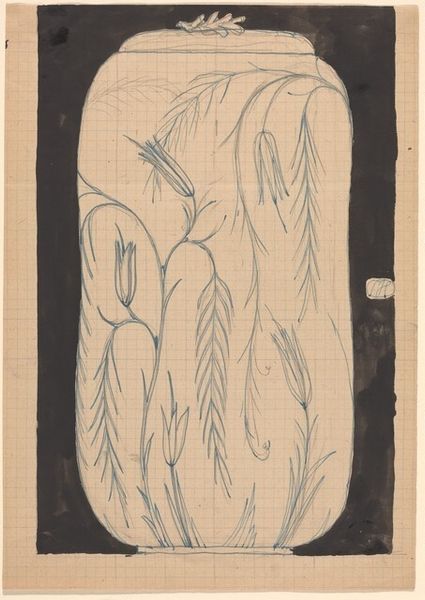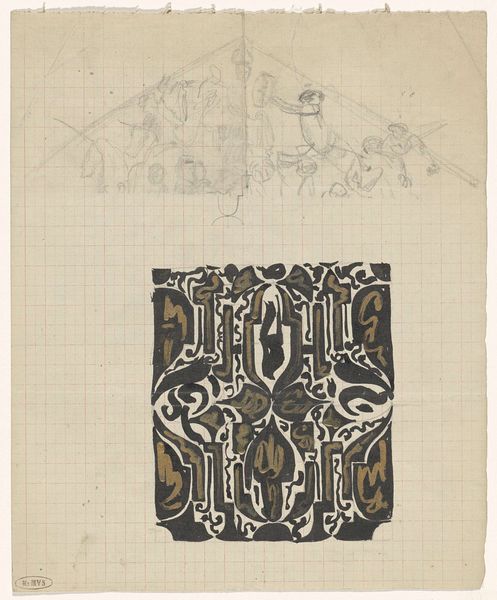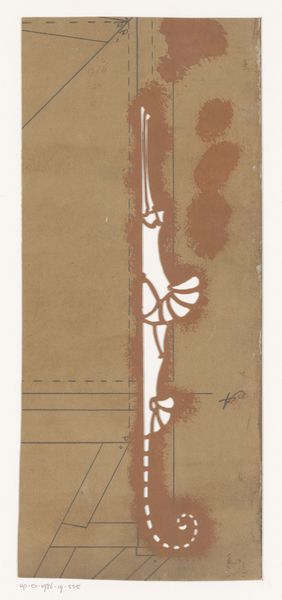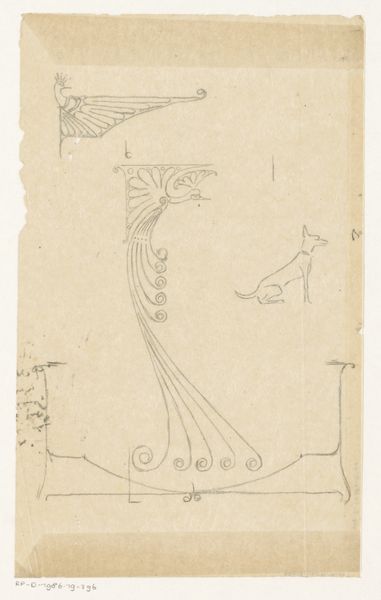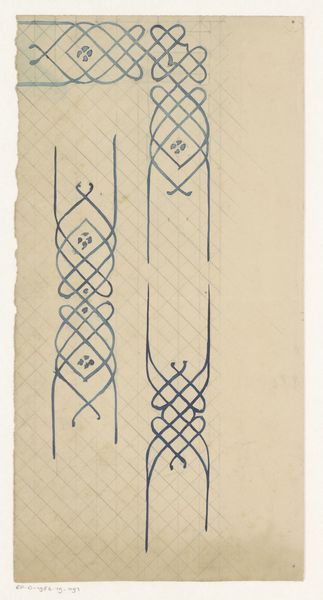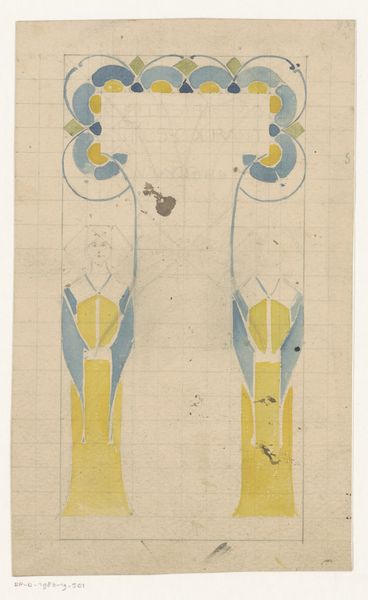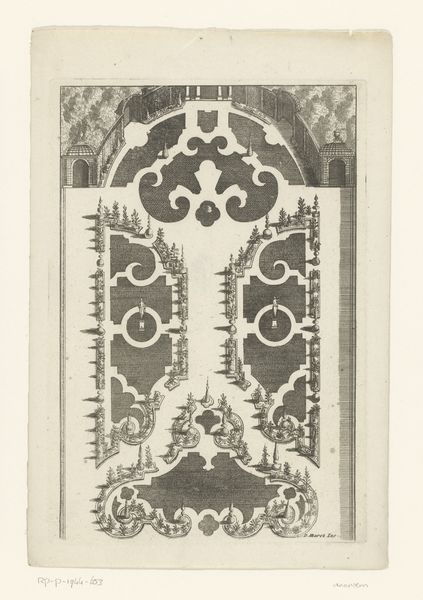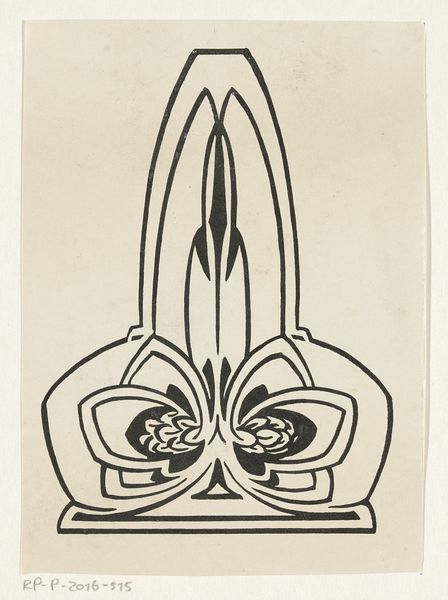
drawing, graphic-art, ink
#
drawing
#
graphic-art
#
art-nouveau
#
blue ink drawing
#
form
#
ink
#
geometric
#
ink colored
#
line
#
sketchbook drawing
#
watercolour illustration
#
decorative-art
Dimensions: height 324 mm, width 156 mm
Copyright: Rijks Museum: Open Domain
Editor: Here we have "Ontwerp voor een decoratief kader," a design for a decorative frame made between 1884 and 1952 by Reinier Willem Petrus de Vries. It seems to be ink on some sort of graph paper. The shapes feel organic yet restrained, like nature trying to escape a rigid structure. What do you see in this piece? Curator: I see an artifact of a society grappling with industrialization. Art Nouveau, as evidenced here, emerges from anxieties about the loss of craft traditions. Notice how the artist uses geometric precision – that grid, those circles faintly visible – as an undercurrent to the seemingly free-flowing, plant-like motifs. It's a negotiation, a tension. Does this suggest a certain class trying to find order in chaos? Editor: Interesting! So the artist is using nature to sort of...tame the coldness of industrial design? Curator: Exactly. The frame is, quite literally, containing the "natural." And frames, historically, define what’s inside as precious, as worth preserving. But what is worth preserving here? A romanticized view of nature, perhaps, threatened by urban sprawl and factories. And who gets to decide what deserves preservation? That's where power dynamics start to appear. This was a privileged gaze, no? Editor: That’s a point I hadn’t considered. It is not really wild nature, but tamed. The work, then, speaks volumes about controlling the narrative. Curator: Precisely. And consider who might commission such a work. To decorate whose home, whose space? It’s not simply about aesthetics; it’s about asserting a particular worldview. This piece encourages us to examine who benefits from this seemingly benign decorative art and to see what they are holding on to. Editor: I had been taken by the form. I see that looking for context brings another perspective. Curator: Yes! Examining these social stratifications behind aesthetic choices really enhances our understanding.
Comments
No comments
Be the first to comment and join the conversation on the ultimate creative platform.
